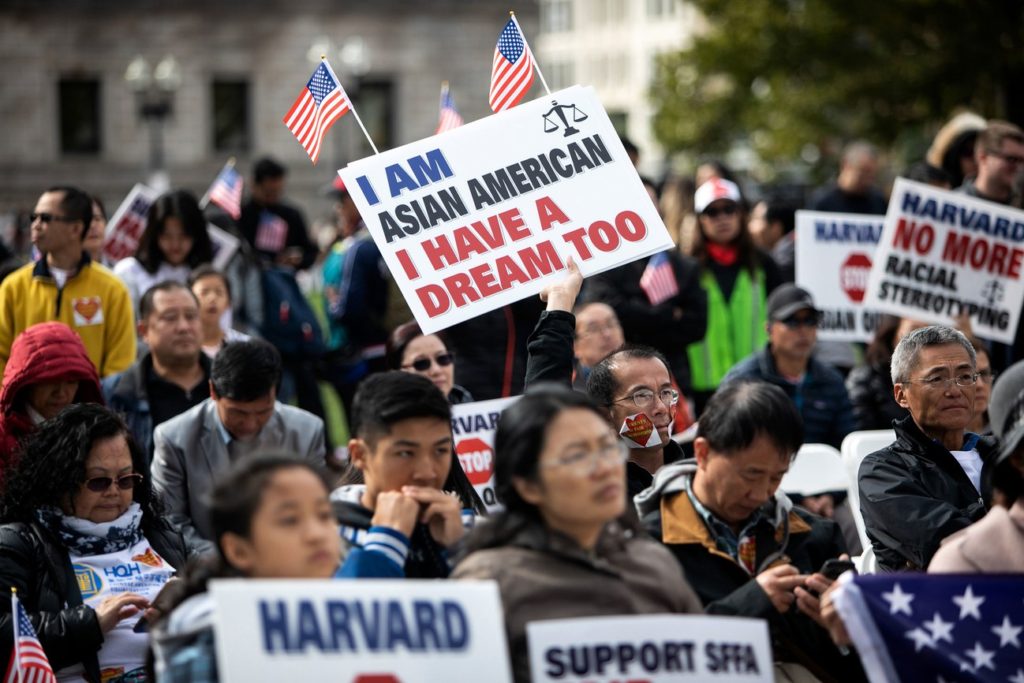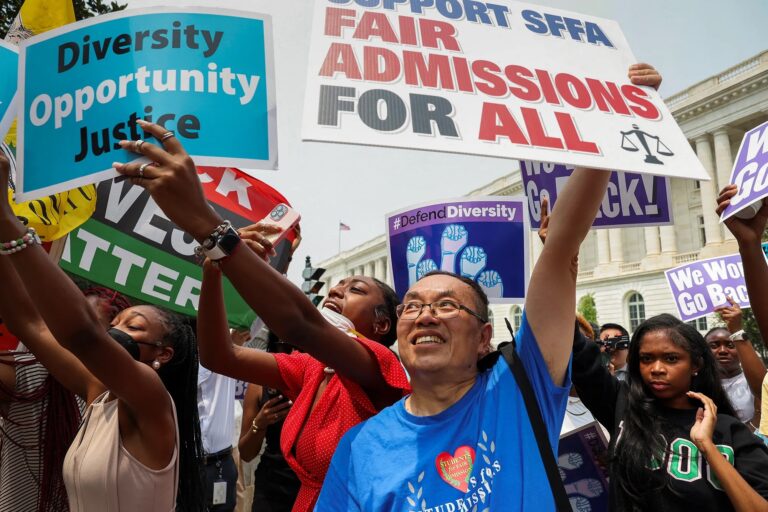
Photo courtesy of The New Yorker
On Tuesday, October 1st, U.S. District Judge Allison D. Burroughs ruled in favor of Harvard University in one of the most high-profile cases on affirmative action in recent years. Her decision put a halt to a legal battle that started in 2014. The leader of the advocacy group “Students for Fair Admissions” (SFFA) Edward Blum sued Harvard on the grounds that the university discriminated against Asian-American applicants in the admissions process.
In her 130-page decision, Judge Burroughs rejected the plaintiff’s four counts in accordance with the legal precedent set in the historic 1978 case Regents v. Bakke, which defined the consideration of race as a factor in admissions as constitutional, so long as it does not include quotas. Judge Burroughs ruled that Harvard’s attention to racial composition does not constitute as the use of quotas since no specific limit is set along racial lines and race is only considered as a “plus factor” in the evaluation of an applicant. In addition, the decision established that Harvard does not intentionally discriminate against Asian-Americans and that the recognition of race is justified and necessary as a result of a lack of alternatives to ensure racial diversity.
In several aspects, the case seems to mirror Fisher v. University of Texas and Grutter v. Bollinger, both of which are earlier examples of challenges to the legitimacy of affirmative action, but the circumstances are more ambiguous. Both Fisher, who sued the University of Texas at Austin, and Grutter, who sued the University of Michigan’s Law School, were white applicants who claimed their admission was denied due to a quota system. The Harvard lawsuit, however, was filed on behalf of Asian-American applicants, a minority group whose complaint was based not only on the restrictions placed on them by quotas but also on racial stereotypes. Although the ruling determined that Harvard does not engage in intentional discrimination, Judge Burroughs admitted the possibility of the role played by implicit racial bias, stating that Harvard’s admissions process is not perfect and there is room for improvement. Nevertheless, potential discrimination doesn’t warrant a complete overhaul of race-conscious policies.
The Harvard case sheds light on two conflicting perspectives on the merits of affirmative action that were also at work in the previous cases: one that criticizes differential treatment and one that considers said differential treatment necessary. Although there is a consensus between members on both sides that equality is desired in higher education, opinions differ as to how such equality is to be achieved. Opponents of affirmative action tend to regard equality in a more literal sense as the rejection of the relevance of race in admissions. In contrast, the precedent set in Regents v. Bakke and reaffirmed in subsequent similar cases suggests that equality necessitates “remedying” the inequality of the status quo in order to combat its continuation and perpetuation.
Judge Burroughs’ conclusion about the inadequacy of race-neutral policies in a race-conscious society reflects Justice Blackmun’s writing in the Bakke case: “In order to get beyond racism, we must first take account of race.” Statistics suggest that their shared belief in the continuing existence of patterns of racial inequality in higher education is not without empirical basis. An enrollment gap exists in the Black and Hispanic communities where the percentages of these groups among college freshmen are lower than the percentages of them in the total population. States where affirmative action was once banned often saw a widening of the enrollment gap following the enactment of the ban, indicating the importance of the policy for socially and economically disadvantaged minorities. Even though there is some truth in the plaintiff’s claim that affirmative action favors other minorities at the expense of Asian-Americans, Asian-American students represent a larger proportion of the student population at Harvard than Black and Hispanic students despite accounting for a smaller proportion of the national population. While the case drew attention to the bias and stereotypes faced by Asian-Americans in admissions, the court once again insisted on the indispensability of affirmative action, suggesting that fair treatment needs to be achieved within the confines of race-conscious policies.
With the Harvard ruling, another entry is created in the list of victories for affirmative action. As long as there is strong evidence for racial inequality in education, it appears that the legal system will remain determined to defend affirmative action as an important instrument in university admissions.
Lilian Wang

